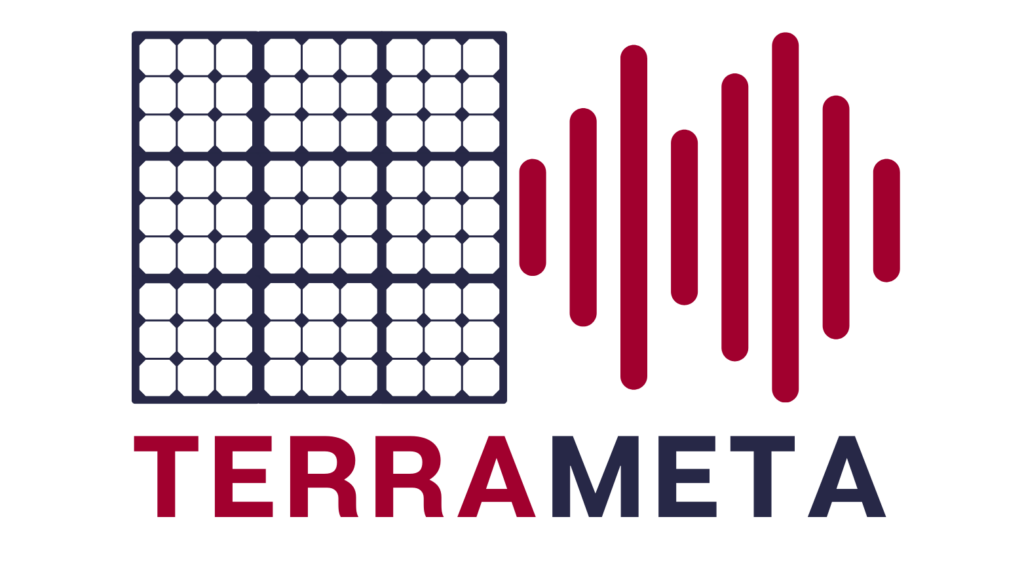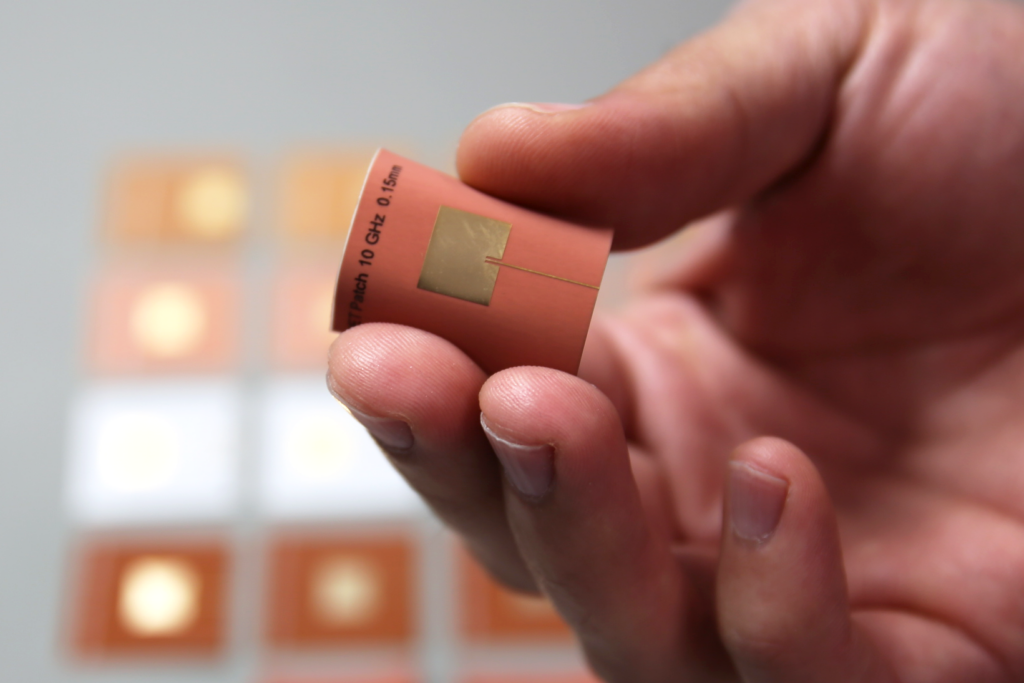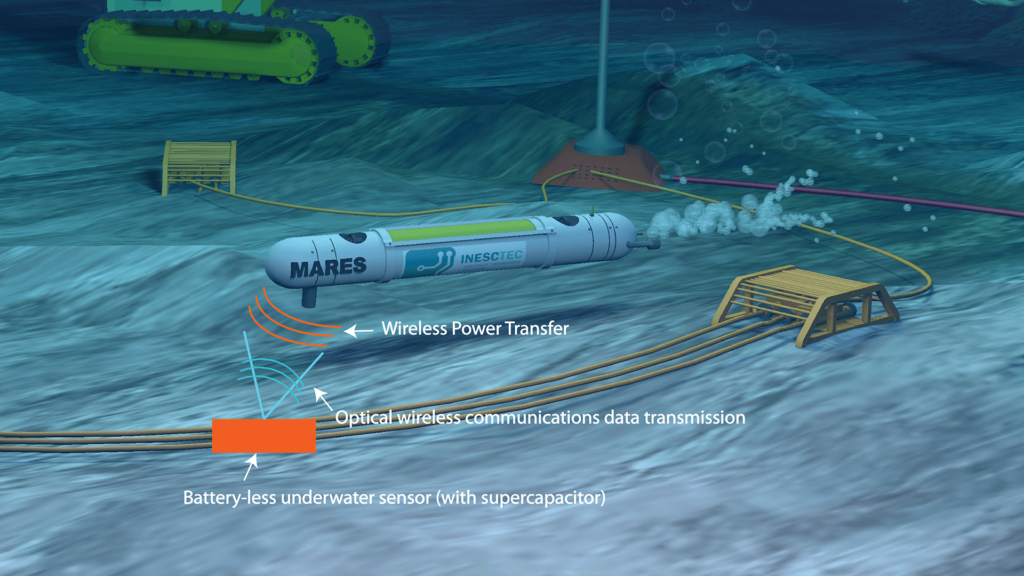CONVERGE – Telecommunications and Computer Vision Convergence Tools for Research Infrastructures

CONVERGE is a Horizon Europe project started on February 2023 and the main objective is the development of an innovative toolset aligned with the motto “view-to-communicate and communicate-to-view”. This toolset is a world-first and consists of vision-aided large intelligent surfaces, vision-aided fixed and mobile base stations, a vision-radio simulator and 3D environment modeler, and machine learning algorithms for multimodal data including radio signals, video streams, RF sensing, and traffic traces. CONVERGE will also provide the scientific community with open datasets of experimental and simulated data obtained with the toolset in the research infrastructures (RI), meet scientific and industrial requirements by addressing relevant 6G verticals, enhance the competitiveness of the involved companies, extend the European influence on world-wide recognized RIs, enable the creation of new RIs, contribute to the development of new environment-friendly tools, and help European Union to address its societal challenges.
The project is coordinated by INESC TEC, with Luís Pessoa as Project Coordinator, and it involves the OET senior researchers Henrique Salgado and Joana Tavares, as well as many other researchers from other areas of the Centre of Telecommunications and Multimedia at INESC TEC.
TERRAMETA – TERahertz ReconfigurAble METAsurfaces for ultra-high rate wireless communications

TERRAMETA is a Horizon Europe project in the scope of the Smart Networks and Services Joint Undertaking (SNS-JU) that started on January 2023 and aims to investigate revolutionary technologies for 6G and demonstrate the feasibility of Terahertz (THz) Reconfigurable Intelligent Surface (RIS) assisted ultra-high data rate wireless communications networks. Novel high-performance hardware including the THz RIS and THz transmitter/receiver will be developed and advanced network analysis/optimizations techniques will be developed using these real THz components. The proposed TERRAMETA THz network will be driven by 6G usage scenario requirements and indoor, outdoor, and indoor-to-outdoor scenarios will be demonstrated in real factory setting and telecom testing field.
The project is coordinated by INESC TEC, with Luís Pessoa as Project Coordinator, and involves the OET senior researchers Henrique Salgado, Vítor Tavares, João Canas Ferreira, Nuno Paulino and Joana Tavares.
SUPERIOT – Truly Sustainable Printed Electronics-based IoT Combining Optical and Radio Wireless Technologies

The SUPERIOT project started on January 2023 and aims at developing a truly sustainable and highly flexible IoT system based on the use of optical and radio communications, and the exploitation of printed electronics technology for the implementation of sustainable IoT nodes. The dual-mode optical-radio approach provides unique characteristics to the IoT system. The system can be reconfigured to use optical, radio, or both connectivity approaches. The hybrid optical-radio system allows very efficient use of resources while combining the advantages of both wireless communication methods. Energy autonomous nodes can harvest energy from both sources, resulting in an efficient and reliable energy system. Positioning accuracy can be also improved by combining optical and radio signals. Moreover, the dual-mode approach results in a highly flexible and adaptable communication system, that can operate efficiently under changing conditions and in different scenarios.
The implementation of the IoT nodes will aim at maximizing printed electronics usage, resulting in a cost-efficient, environmentally friendly solution. Nodes will have essential IoT functionalities such as sensing, actuating, and computational capabilities. As important as the development of a sustainable and flexible IoT node will be the development of its networking capabilities.
The SUPERIOT project is coordinated by the University of Oulu in Finland. It involves the OET senior researchers Luis Pessoa, Henrique Salgado, Vitor Grade Tavares, Maria Inês Carvalho, João Canas Ferreira, Nuno Paulino and Joana Tavares. This Project also involves researchers from the Wireless Networks area of the Centre of Telecommunications and Multimedia at INESC TEC.
TORIS – Towards Fully Printed Reconfigurable Intelligent Surfaces

The TORIS project will resort to flexible printed electronics solutions to create prototypes adapted to the future of communications. Printed electronics is a technology that allows the printing of circuits on different surfaces. Thanks to this technique, it will be possible to minimise material waste and the costs of producing large volumes of antennas, an environmentally friendly solution that allows greater deployment flexibility.
The aim is to develop intelligent and controllable solutions, contributing to the easy integration of intelligent antennas on surfaces like ceilings, walls, or furniture. The flexibility of this printing technique plays an important role as it will allow the surface of the antenna to adapt to the shape of the objects or surfaces on which it can be installed. It is expected that these antennas can be applied in the sixth generation of mobile communications (6G), providing better mobile coverage inside buildings, but also applications in 3D detection of human presence in the areas of health, automotive or manufacturing.
With an investment of €50K, the project is funded by the Foundation for Science and Technology (FCT) and will last for 18 months. INESC TEC is the leader of the project, which also features Universidade Nova de Lisboa.
A-MoVeR – Mobilizing Agenda for the Development of Products & Systems towards an Intelligent and Green Mobility
A-MoVeR is a project that launched in September 2022 and aims to foster a substantial change within the industrial ecosystem in the northern interior region of Portugal, particularly in the automotive cluster of Trás-os-Montes and Alto Douro. Therefore, the project proposes a structured set of activities that will enable knowledge and technological advancements and integrate participating companies into value-added segments of international value chains.
To accomplish such ambitious goals, the project presents a comprehensive proposal of R&D and Productive Investment initiatives, supported by the coordinated efforts of a multidisciplinary Consortium with broad competencies and extensive experience in I4.0, Cybersecurity, IoT, and advanced production techniques, among others.
The Consortium Leading Promoter is Continental Advanced Antenna, Lda. (Continental AA). The head of the project at INESC TEC is Luis Pessoa, and it involves the OET senior researchers Henrique Salgado, Nuno Paulino, and Joana Tavares.
A-IQ READY – Artificial Intelligence using Quantum measured Information for real-time distributed systems at the edge

The A-IQ READY project proposes cutting-edge quantum sensing, edge continuum orchestration of AI and distributed collaborative intelligence technologies to implement the vision of intelligent and autonomous ECS for the digital age. Quantum magnetic flux and gyro sensors enable highest sensitivity and accuracy without any need for calibration, offer unmatched properties when used in combination with a magnetic field map. Such a localization system will enhance the timing and accuracy of the autonomous agents and will reduce false alarms or misinformation by means of AI and multi-agent system concepts. As a priority, the communication guidance and decision making of groups of agents need to be based on cutting-edge technologies. Edge continuum orchestration of AI will allow decentralizing the development of applications, while ensuring an optimal use of the available resources. Combined with the quantum sensors, the edge continuum will be equipped with innovative, multi-physical capabilities to sense the environment, generating “slim” but accurate measurements. Distributed intelligence will enable emergent behavior and massive collaboration of multiple agents towards a common goal. By exploring the synergies of these cutting-edge technologies through civil safety and security, digital health, smart logistics for supply chains and propulsion use cases, A-IQ Ready will provide the basis for the digital society in Europe based on values, moving towards the ideal of Society 5.0.
The project started on January 2023 and lasts 36 months, with the participation of 50 partners from 16 countries. Moreover, it’s part of the Horizon Europe Programme, an initiative by the European Union that aims (until December 2027) to support research and innovation activities worth €95.5B – with INESC TEC benefiting from €384K for this project.
The A-IQ READY project is coordinated by AVL LIST GMBH and the head of the project at INESC TEC is João Canas Ferreira. This project involves researchers from the Centre for Telecommunications and Multimedia (CTM) and the Human-Centered Computing and Information Science (HumanISE).
UNIFY – Compilation Abstraction and Hardware Adaptation for Specialized and General-Purpose Computing Unification
The UNIFY project, launched in March 2023, aims to develop compiler technology within the scope of new computing architectures – which can be programmed from conventional, widely used programming languages. INESC TEC is one of the partners of this project that promises to create a unified response to the technological limitations of general-purpose processors (GPPs). While the increasing amount of data and the advancement in algorithm design have demonstrated the performance and efficiency limitations of the so-called general-purpose processors, they’ve also paved the way for the development of new specialized architectures capable of addressing current computing efficiency and performance needs.
The project aims to develop a compiler technology that allows the use of new architectures via conventional, widely used programming languages. In particular, and within the scope of this project, INESC TEC focuses on developing an intermediate language, which allows programming different architectures based on the so-called conventional languages. This will allow users to benefit from performance advantages of new or customized architectures, avoiding the effort dedicated to learning new methodologies and languages.
The project’s advantages will materialize in emerging domains like edge computing, Artificial Intelligence, and machine learning applications or 5G/6G telecommunications, which require fast response time and low power consumption.
With an investment of €250K, the project is funded by the Foundation for Science and Technology (FCT) and will last for 36 months. UNIFY is led by INESC-ID, with the Centre for Telecommunications and Multimedia (CTM) and the Centre for Human-Centered Computing and Information Science of INESC TEC and the Instituto de Telecomunicações (IT), in Coimbra, as partners.
Past projects
SLID – Stock Live IDentification

SLID results from an I&DT partnership with Wavecom and aims to improve the transport and storage of products in indoor and outdoor environments.
The SLID project began on December 2019 and it focuses on the development of a product that can be used in cargo vehicles and indirectly track the location and movement of all products in stock, in all logistical scenarios.
In this sense, this innovation will be able to locate the vehicle – with low-cost infrastructures and easy installation – and to identify the products being transported, as well as the moment they are loaded and unloaded.
By the end of the project, the solution is expected to improve the logistical efficiency of industrial (or other) units that wish to reduce the number of product and inventory errors and to increase the automation of diverse processes, such as verifying the adequate shipment of objects.
The SLID project is scheduled to be completed by December 2021 and involves the OET senior researchers Luís Pessoa, Henrique Salgado and João Canas Ferreira.
STRx – Transmission and Reception System of Electronically Oriented Signals for Next-Generation Satellite Constellations

STRx brings together Sinuta, S.A. (leading promoter), Instituto de Telecomunicações (IT) and INESC TEC. The main purpose of this project, which started on May 2019, consists of developing a transmission system and receiving an electronic guiding signal for future satellite constellations, which will have the task of providing broadband and low-cost internet.
The STRx project intends to address the existing gap in the market of this segment, by creating a low-cost electronically guided communication system with high data transfer rate to operate with non-stationary orbit satellites. It will initially target the business and terrestrial mobility sectors and subsequently the domestic sector, where implementation and operation of the fixed infrastructure is not feasible, once the cost structure has been optimized. The INESC TEC’s team is composed of the senior researchers Luís Pessoa, Henrique Salgado and João Canas Ferreira. The project will last for three years.
PEPCC – Power Efficiency and Performance for Embedded and HPC Systems with Custom CGRAs

The goal of the PEPCC project is to devise efficient techniques for dynamically mapping computations extracted from execution behavior to the resources of specialized reconfigurable accelerators. The techniques will identify at runtime the hotspots of program execution. They are then optimized and mapped to Coarse-Grained Reconfigurable Arrays (CGRAs) tailored to the actual set of executing kernels. Whenever one hotspot needs to be executed, the accelerator is transparently invoked. The use of specialized CGRAs reduces resource usage and improves performance. The project will apply these concepts in the embedded systems and high-performance computing (HPC) domains.
This project started on October 2018 in partnership with INESC-ID and will last for two and a half years. The lead investigator of PEPCC project is the OET senior researcher João Canas Ferreira.
NeurOxide – integration of oxide thin film transistors and memristors in neuromorphic networks

NeurOxide project is a partnership between the Materials for Electronics, Optoelectronics and Nanotechnologies group (MEON) from the Centre of Materials Research (CENIMAT/i3N) and INESC TEC that targets the integration of thin-film transistors with memristors in neuromorphic circuits through the application of a common active material. The inherent characteristics of a memristor are ideal for artificial neural networks. Parallel computation, an unpreceded level of device integration and the nanometric size of the memristor element push energy efficiency and circuit miniaturization beyond the limits of CMOS technology. Both the semiconductor and the resistive switching layer are made of an amorphous oxide semiconductor. Numerous applications may be envisioned, since such circuits can be made transparent and flexible. The thin-film deposition is made by well-controllable physical vapor deposition as well as by an innovative low-cost solution-based route. The latter approach allows considering the creation of a spin-off company in Portugal, since a direct competition with the large-scale vacuum-based fabricating industry is avoided.
This project started on September 2018 and will last for three years. The co-principle investigator of NeurOxide project is the OET senior researcher Vítor Grade Tavares.
ENDURANCE – Underwater Wireless Energy and Communications Enabling Long-term Deep-sea Presence

ENDURANCE project, which started on July 2018, intended to exploit recently proposed underwater wireless power transfer (WPT) techniques coupled with an underwater optical wireless communications (UOWC) solution and an autonomous underwater vehicle (AUV) navigation and perception (NAP) solution. AUVs equipped with an WPT/OWC hybrid solution could navigate near battery-less underwater sensors to rapidly provide them enough power until the next passage while quickly gathering the accumulated sensor data. The OET senior researchers included Luís Pessoa (coordinator), Cândido Duarte and Henrique Salgado. The ENDURANCE project was completed by December 2020.
TERAPOD – Terahertz based ultra high bandwidth wireless access networks

The objective of the TERAPOD project was to create, test and provide new forms of wireless communication capable of responding to the demand for high-speed connections in the coming decades, namely by demonstrating a wireless communications system in a datacenter scenario in the Terahertz frequency band. TERAPOD aimed to demonstrate the feasibility of ultra high-bandwidth wireless access networks operating in the THz band driven by ‘beyond 5G’ usage scenario requirements.
This project started on September 2017 and had a duration of 3 years. The project coordinator was the Waterford Institute of Technology (WIT), Ireland. The OET senior researchers involved in this project were Luís Pessoa, Henrique Salgado, Vítor Tavares and Maria Inês Carvalho, who had the task of developing new array antennas, specifically for the 300 GHz band, which were integrated in different types of transceiver devices.
